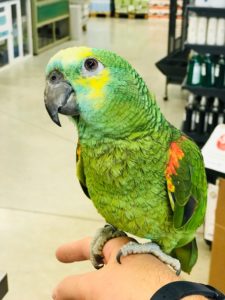
As science grows smarter and more sophisticated, the study of many things becomes much more in-depth. We are now not only able to discover new and interesting reality traits, but science has further evolved to a point that allows for it to expand heavily on newfound pathways for our accumulated knowledge base. This will take us further into exciting new territory as we learn how we all link together, and how we can connect the unconnected. For parrots, we know well their immense vocal capabilities. We know that they can mimic many sounds.
In a recent new study, Zhilei Zhao, a Klarman Fellow in neurobiology and behavior in the Cornell University College of Arts and Sciences, knew that the rarity of ability for articulated words, phrases, and the retainment of them are limited to a few species – some whales, dolphins, birds, and humans. His interest was in the brain of the parrot and how it works to allow for such a magnificent feat. For this study, he used parakeets as the model for the brain’s involvement in vocal learning.
The mystery is in how certain regions of the brain work to create vocalizations and effectively use those to produce a communicative result. While the human species is still in ongoing studies, the pathways used by parrots and songbirds to create vocal patterns and use them are of interest. The study looks closely at Anterior Forebrain Pathways (AFP), and Posterior Forebrain Pathways (PFP) – essentially the front and rear of the forebrain itself and their essential roles in the production of usable vocalization (sound) and acoustic structure (how wave motion produces sound).
Differences Between Songbirds & Parrots
What has been discovered is that songbirds and parrots both have distinctly utilized vocal learning capabilities, they have two different pathways in that learning. We recognize that the songbird itself learns a song in its juvenile stage and doesn’t learn much afterward. They use both the PFP and the AFP regions of the forebrain to produce different results. By inactivating the AFP region, acoustic structure was degraded in both the parrot and the songbird. Parrots, along with humans, actively use both the AFP and PFP regions to learn a continuous stream of new vocalizations as they grow. However, isolation of the PFP in parrots degraded their acoustic structure whereas, in songbirds, it did not. This can help us understand more how parrot and human brains use certain unique pathways to learn and communicate more effectively.
Zhilei Zhao is also working on creating an AI that will help analyze parrot sounds and form pattern recognition and predictive capabilities. Soon enough, we may come to discover just what parrots are talking about among themselves and individually.
The study itself is a complexity to the layman trying to understand how parrots create the amazing vocals they do. But as science advances and more studies are undertaken, we will eventually come to a full realization of how we fully develop and communicate by way of the brain. The fact that humans, parrots, and many other living things can communicate at all is an amazing feature of nature. The more we know about this, the better we will be able to harness communication and enhance it for greater things.
In past work, Zhilei Zhao was heavily involved in discovering what triggered the mosquito to zero in on a human. His work translated into amazing breakthroughs in genetics and chemistry as well as the model of neuroscience. His work resulted in a vast understanding of the mosquito smell system that will produce better momentum in further studies.
